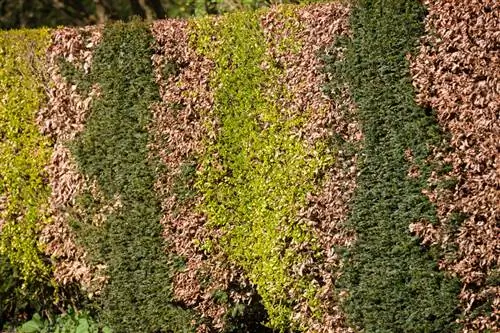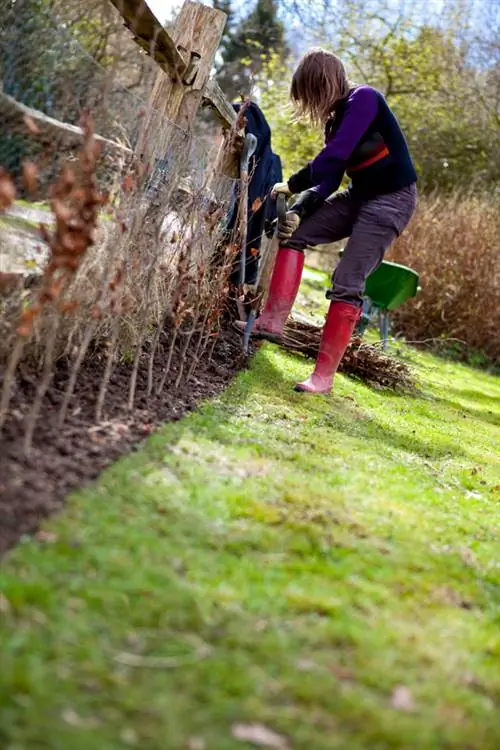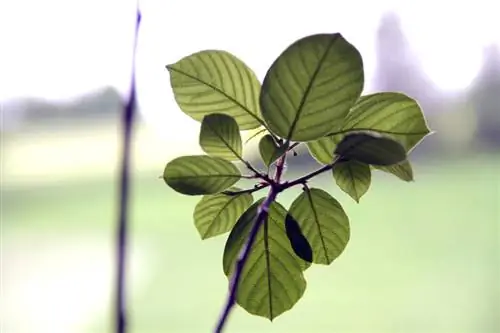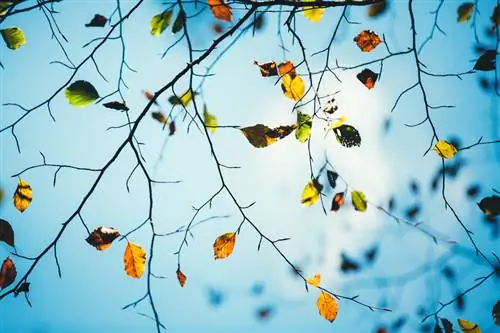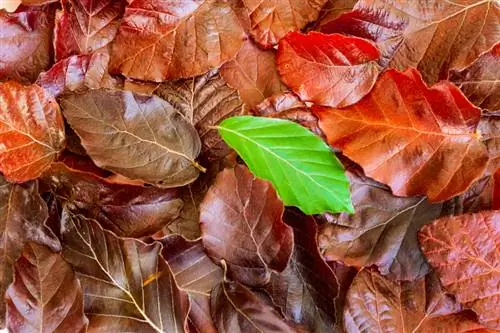- Author admin [email protected].
- Public 2023-12-16 16:46.
- Last modified 2025-06-01 06:02.
Beech trees are also popular as hedges because they are very robust and rarely get sick. Prerequisites for good he alth are a good location and regular care. However, diseases and pests cannot be completely prevented.

What diseases and pests occur in beech hedges?
Beech hedges can be affected by diseases such as leaf spot fungus and powdery mildew as well as pests such as spider mites, beech mealybugs and beech ornamental louse. Good care and he althy site conditions can help prevent or combat these problems.
What diseases and pests can occur?
- Leaf spot fungus
- Powdery mildew
- Spider mites
- Beech mealybug
- Beech ornamental louse
In general, it can be said that a he althy beech tree can cope well with diseases and pests as long as the infestation does not get out of hand.
However, early control of diseases and pests is advisable for young, freshly planted beech hedges. Otherwise there is a risk that the young plants will die because they have not yet been able to develop enough resistance.
Fungal diseases on beech hedges
The best way to recognize fungal diseases is by looking at the leaves. If these curl up, discolor, dry out and fall off prematurely, a fungus is often responsible. Powdery mildew is noticeable through whitish spots on the leaves.
Fungi often appear in very wet summers or when the location is waterlogged.
Cut off affected plant parts generously. The beech can tolerate a generous cut down to the old wood. Dispose of all clippings, including fallen leaves, in the trash can - not in the compost!
Pests that occur on beech hedges
Beech mealybugs can be a real danger, especially in hedges. An infestation is shown by curling leaves that later fall off. You can tell that these are lice and other pests by the feeding burrows, larvae or lice themselves.
Sometimes it helps to treat the beech trees with nettle decoction. In severe infestations, this is rarely enough. In this case, you have no choice but to use a fungicide from a garden supply store.
Cut off all affected parts and throw them in the trash can. It is important that you carefully rake up and dispose of fallen leaves in autumn, as the pests hibernate in them and attack the beech hedge again next year.
Tip
“Prevention is better than cure” - This old sentence is also justified when it comes to beech hedges. Make sure that the pests' natural enemies such as lacewings, ladybirds, parasitic wasps and hoverflies feel comfortable in the garden. They help to keep the pest infestation within limits.

